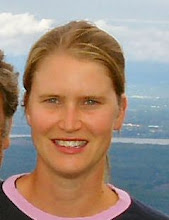What are you doing now that it is winter? Are you still harvesting vegetables? You must just be resting now that it is cold. These are questions and comments we hear from people nearby who know we are farmers but aren’t exactly sure what it is we do in the fall. The fall is time for cleaning up, putting the fields to rest, bringing things under cover to protect them from the winter weather, and drawing things to a close. It is also time for new beginnings.
Last week we took advantage of the mild weather to harvest the celeriac, rutabaga, and cabbages. They were the last of the storage crops to bring in from the fields. All of the root crops are now stored in 20-bushel bins in the barn and the cooler. The bins are stacked six high to the ceiling in the barn and are quite imposing to look at. We will have plenty of root vegetables and winter squash to deliver for the last two weeks. In the field we can still harvest the curly “Winterboer” kale and Brussels sprouts. Unfortunately, the Brussels sprouts are diseased due to the wet summer weather, so we won’t find enough for all of you. If the cold this weekend doesn’t damage the broccoli and cauliflower, we may still be able to harvest those, too.
The crew is busy in the barn packing and washing root crops. It is a lengthy process to clean and pack thousands of pounds of root and storage crops. It does provide us with work that is under cover and out of the cold wind, but we get a little antsy for some outdoor work. We have two washers for root crops so that we can deliver them clean and sorted. We bag some of the washed produce, such as the carrots and parsnips, so that they will stay crisp and flavorful. We don’t wash other crops, like the sweet potatoes and potatoes, so that they will store better in your cupboards. The sweet potatoes are cured in the greenhouse right after harvesting. We keep them at 85 degrees for a week. The curing process makes the sweet potatoes sweet and heals over any cuts that the roots received during harvesting. Once the sweet potatoes are cured, we have to handle them like eggs because any new cuts or damage to the skin will cause the roots to rot quickly. The sweet potato crop is storing much better this year because we harvested them before the weather turned cold.
All of the cover crops are planted and some have grown quite a bit for a thick winter cover.
The later-planted rye is up about 6 inches, just enough to protect the soil over the winter, and will begin to grow again in the early spring. By June the rye will be about five feet tall and ready to cut for straw mulch. John spent a couple of weeks spreading compost in early September so that we won’t have to in the spring. Then he seeded oats in the fields for our early crops like lettuce, potatoes, parsnips, and the plasti-culture crops. The oats will die over the winter. In late March and early April we can lightly till the soil and it will be ready for planting. The rye fields will be ready for the fall crops in July and August. Other fields are in clover and grass to build soil fertility and for hay. But, for now the fields are done with growing things and are at rest for the winter.
In the animal realm of the farm, the ram is in with the ewes and the boar is in with the sows. As the day length shortens, the ewes go into estrus. We want the ewes to lamb in late March and early April, so we put the ram in the ewe pasture on November 1st. Right now, we have 45 ewes, one ram, and one whether (the ram’s sidekick when he isn’t in with the ewes, so he won’t get lonely). That means we should have about 60 to 70 lambs in the spring. We have two sows in with our Tamworth boar. We should have about 20 to 25 piglets in early March. We purchased a Tamworth boar as they are traditionally a pasture-raised breed and are able to get some nutrients from grazing. The boar made this very clear as he found ways to constantly escape the greenhouse barn last spring to get on the sheep pasture to graze. We had no idea that a pig could jump four feet high! The sheep and pigs have access to the greenhouse barn and pasture all winter. This keeps them healthier and the barn cleaner.
The 2009 seed catalogs are beginning to arrive in the mail. Over the next couple of weeks we will talk with the crew about what crops did well, what varieties we really liked, and what varieties we would like to change. We will read up on new varieties and take recommendations from other farmers and our Cornell Cooperative Extension Agent, Chuck Bornt. We will then choose our varieties for the 2009 season and place our seed orders before the new year begins. As this season draws to a close we are planning and looking forward to another. We hope you will join us as we journey through a new growing season. ~ Jody
Subscribe to:
Post Comments (Atom)




No comments:
Post a Comment